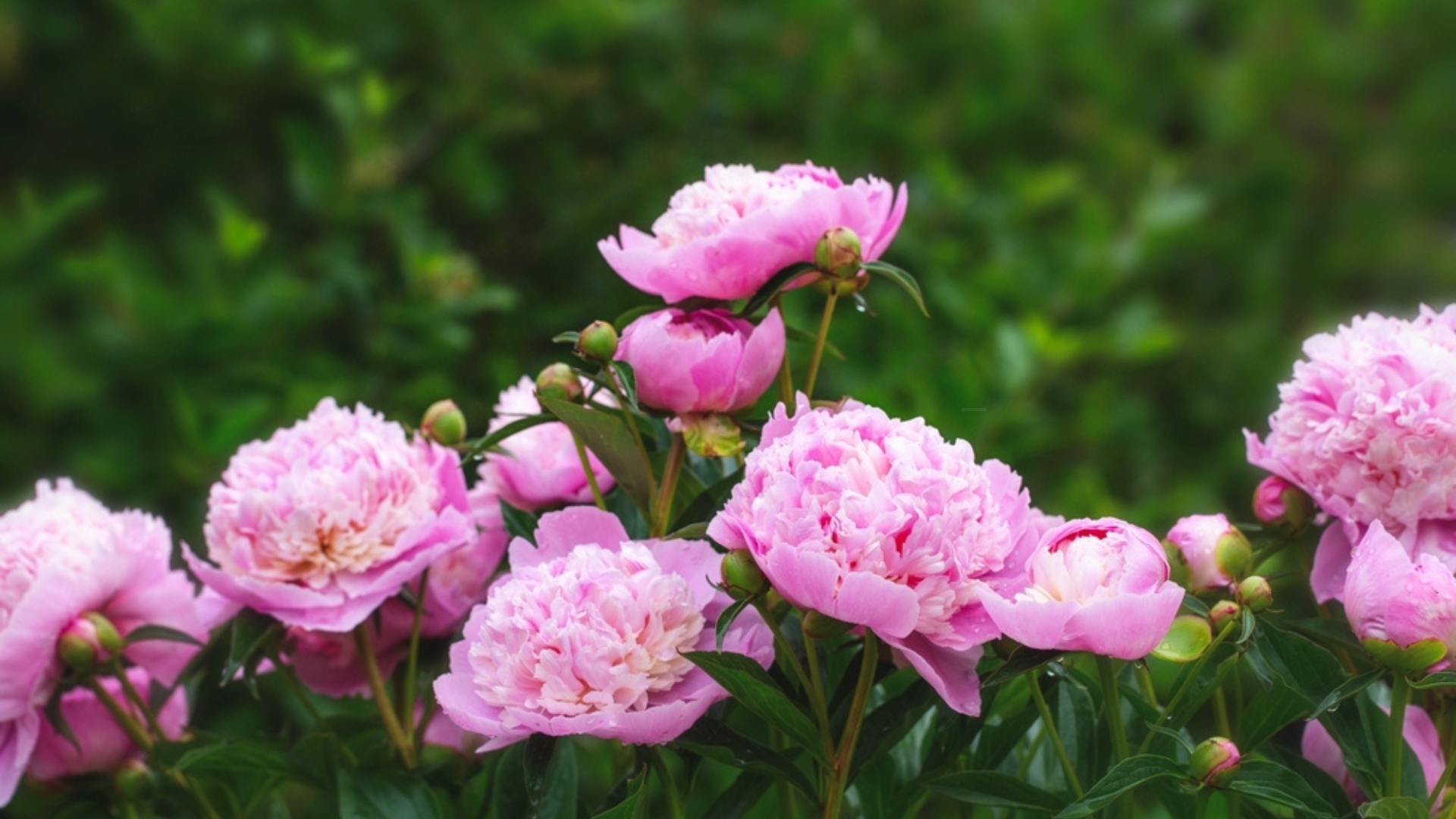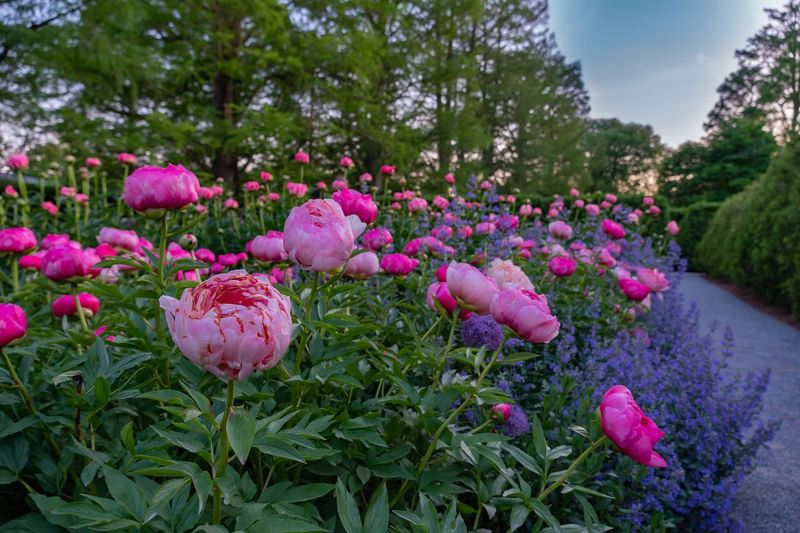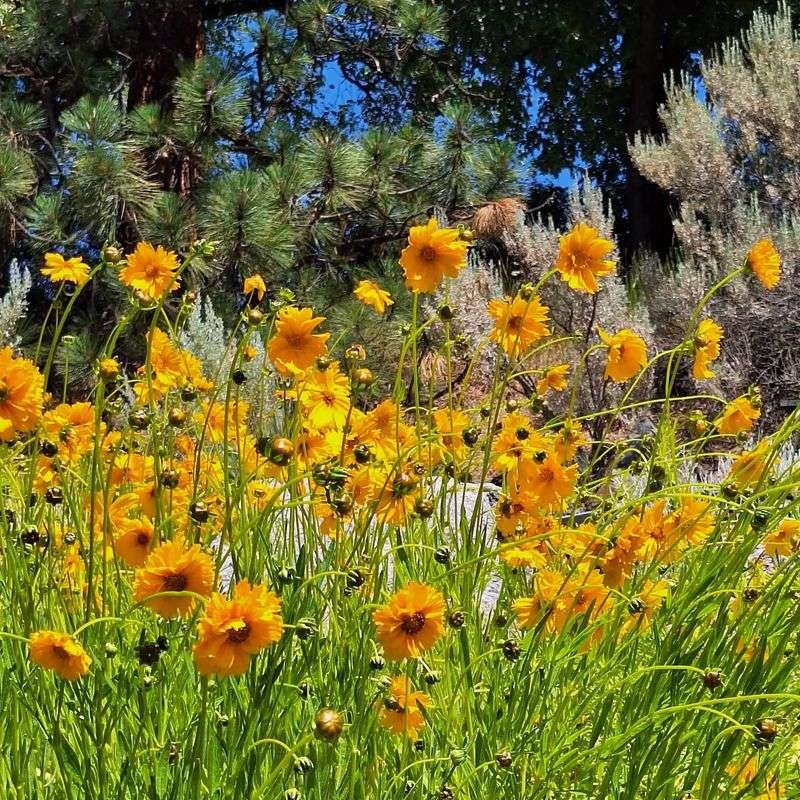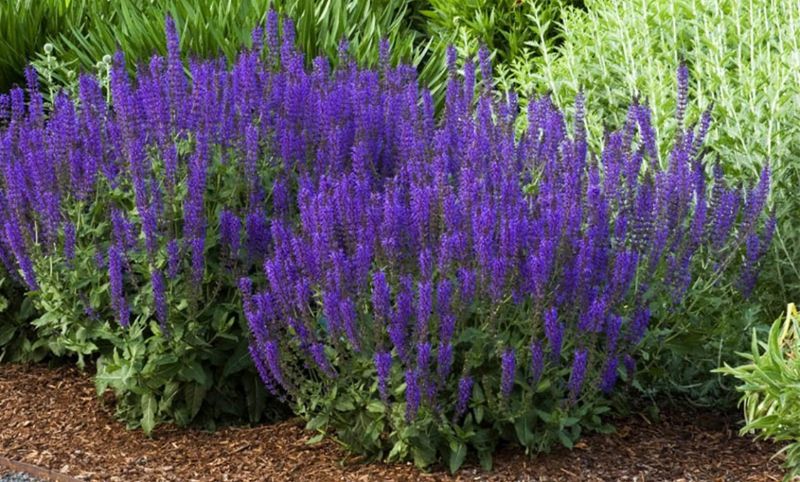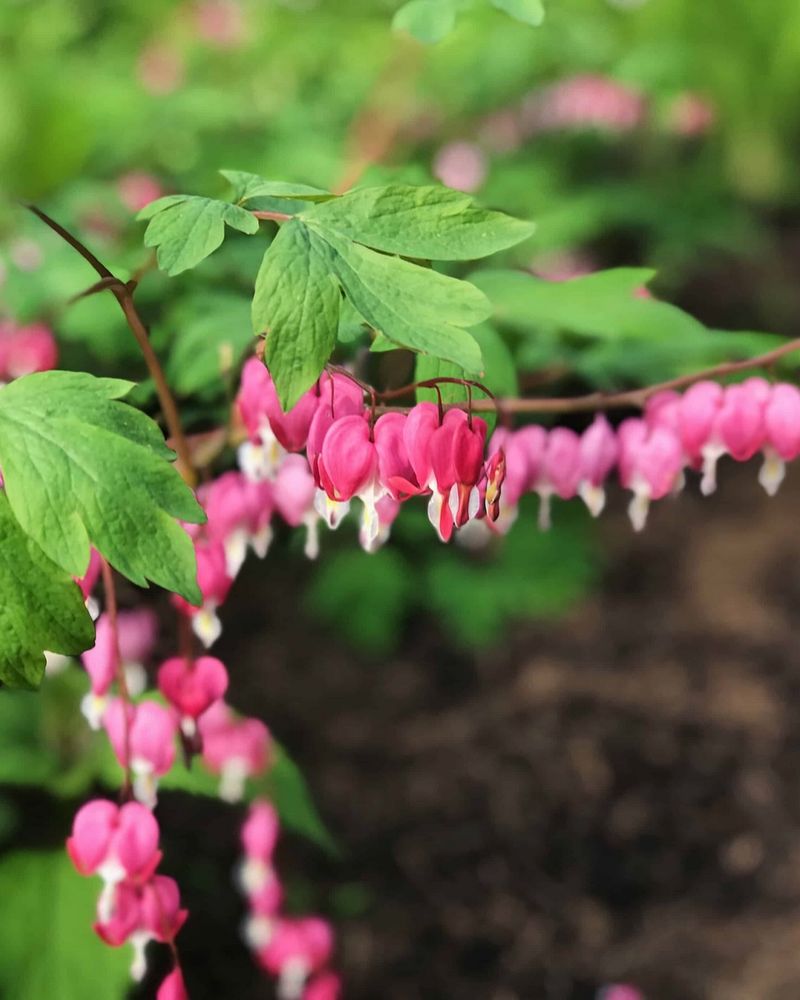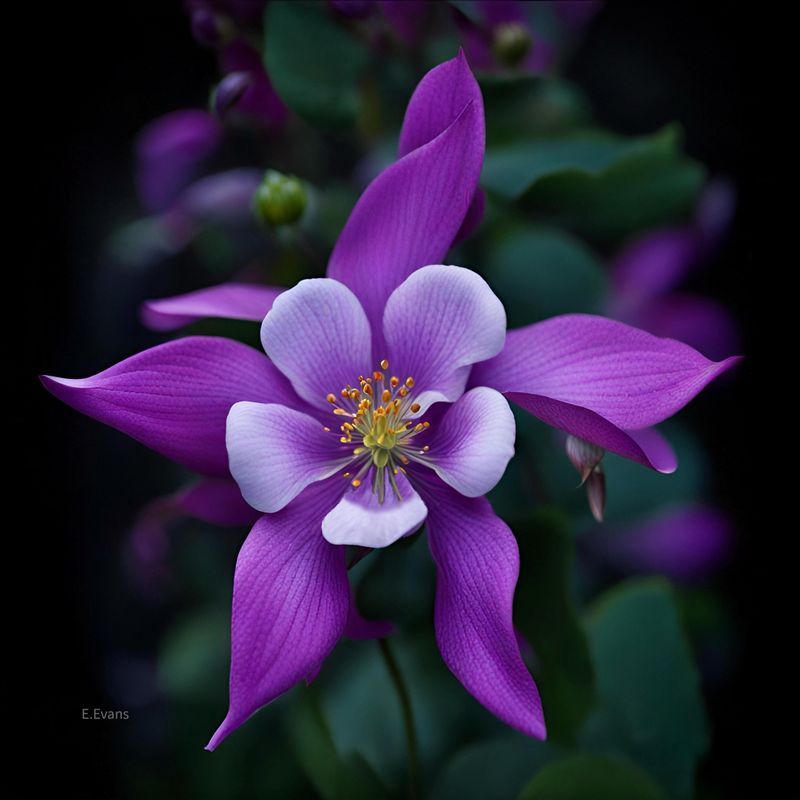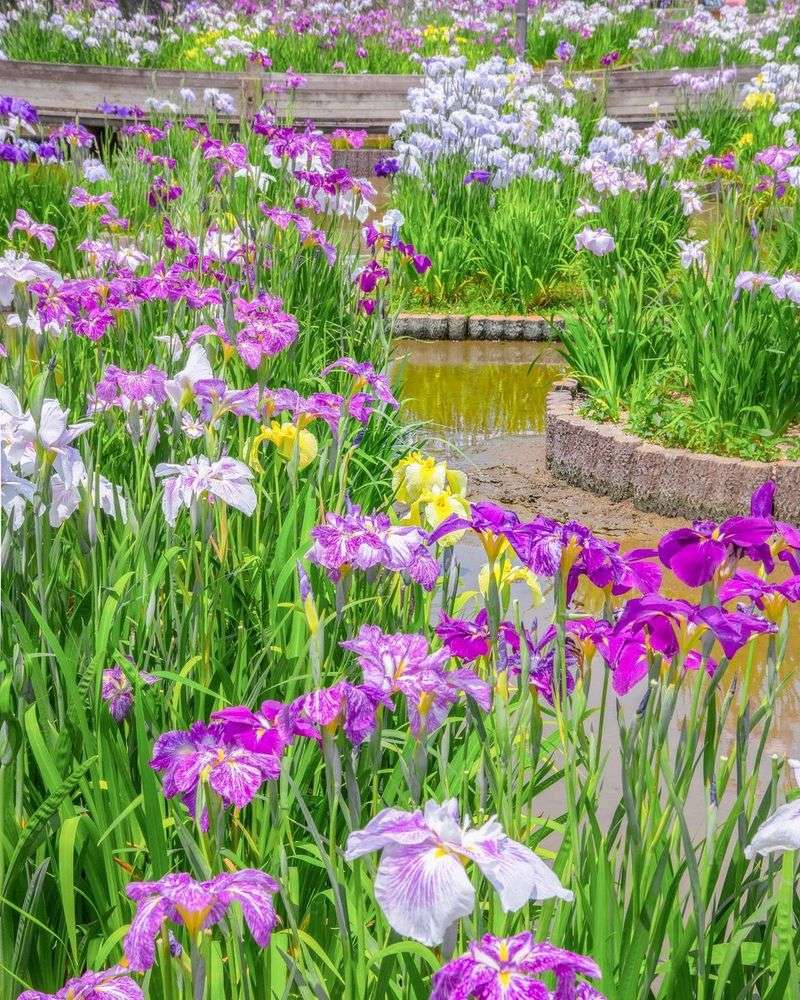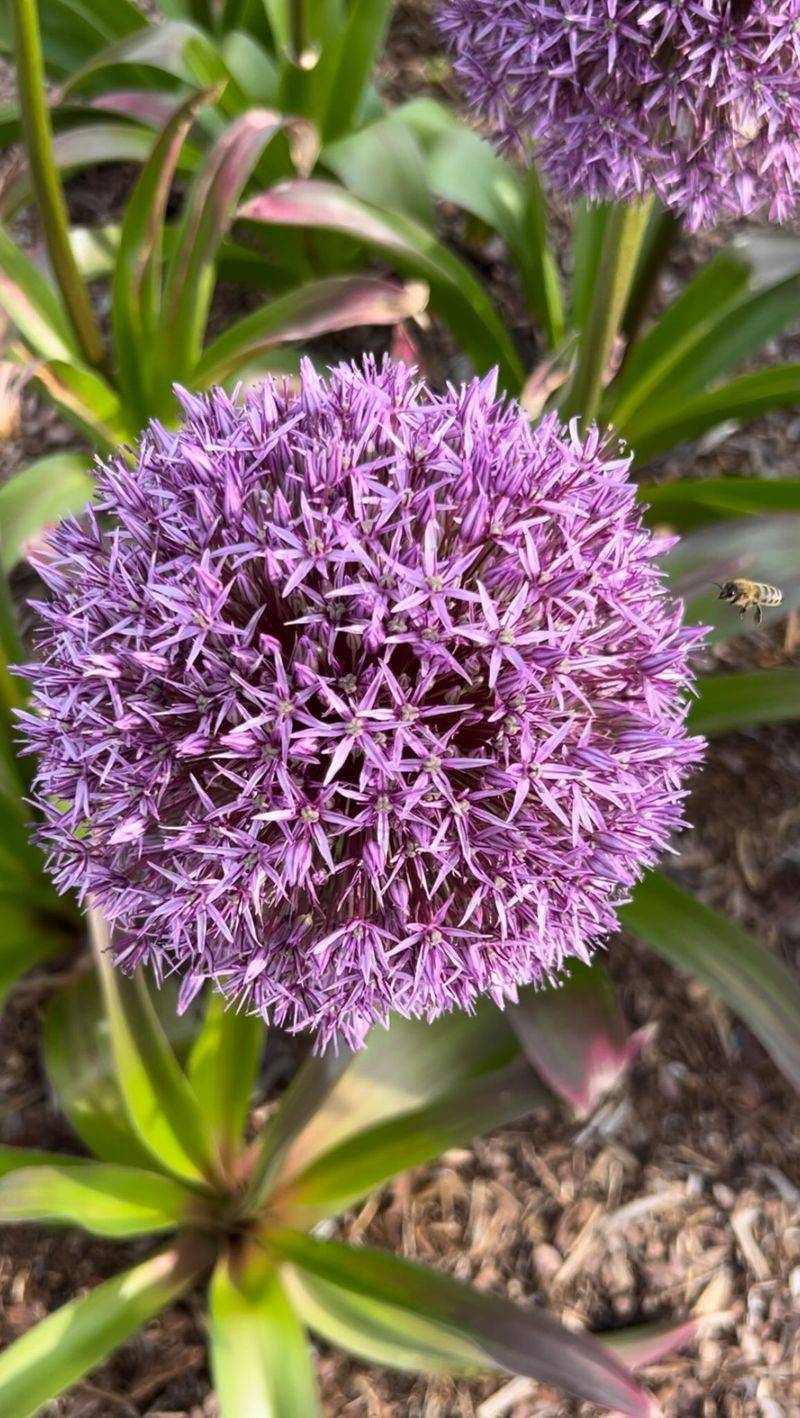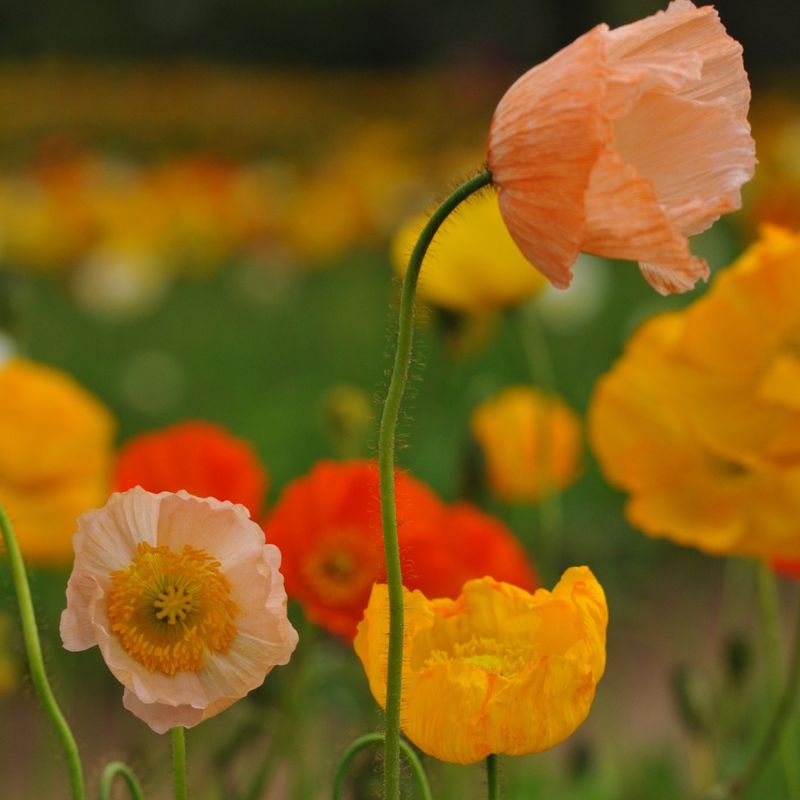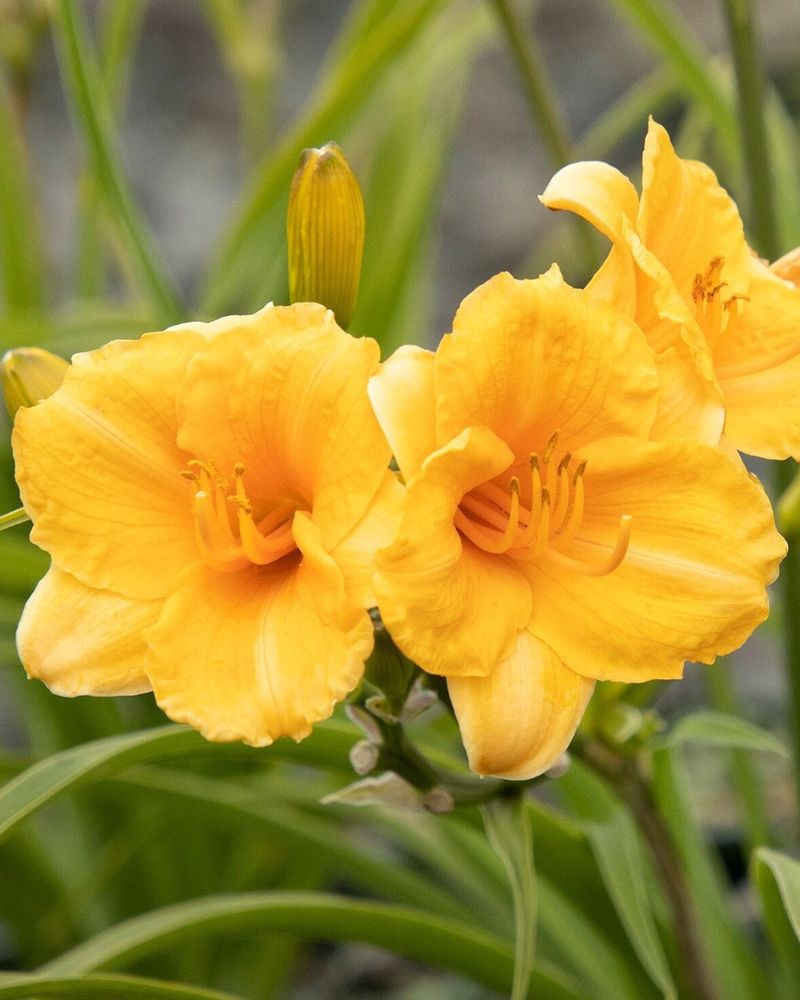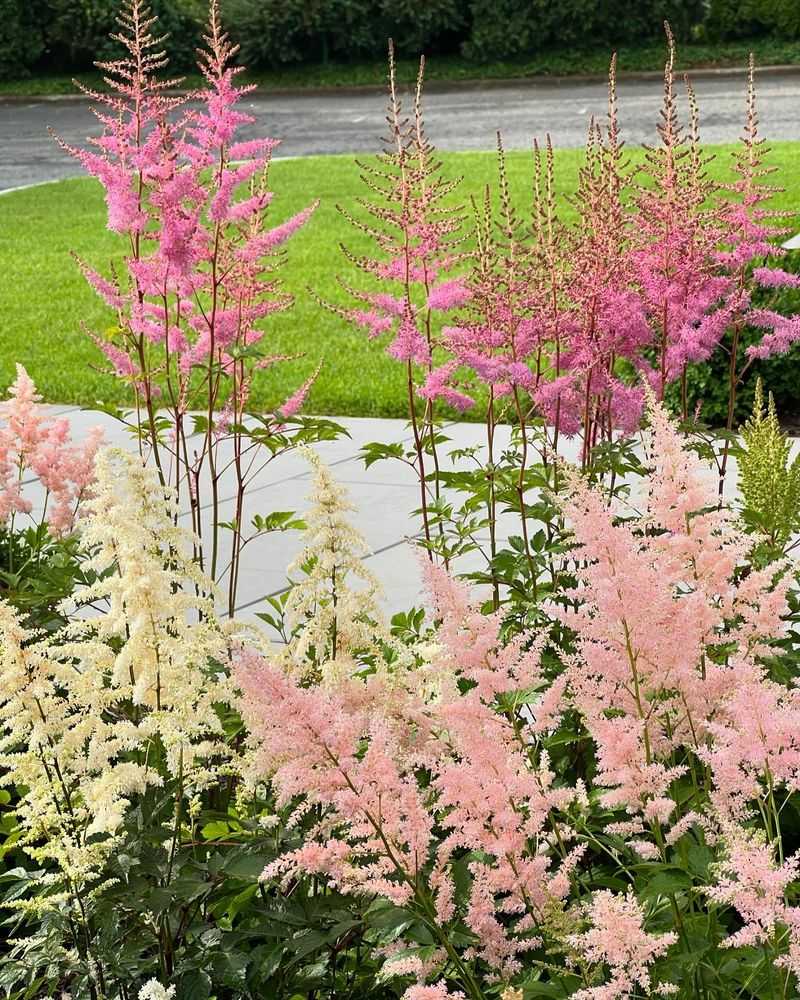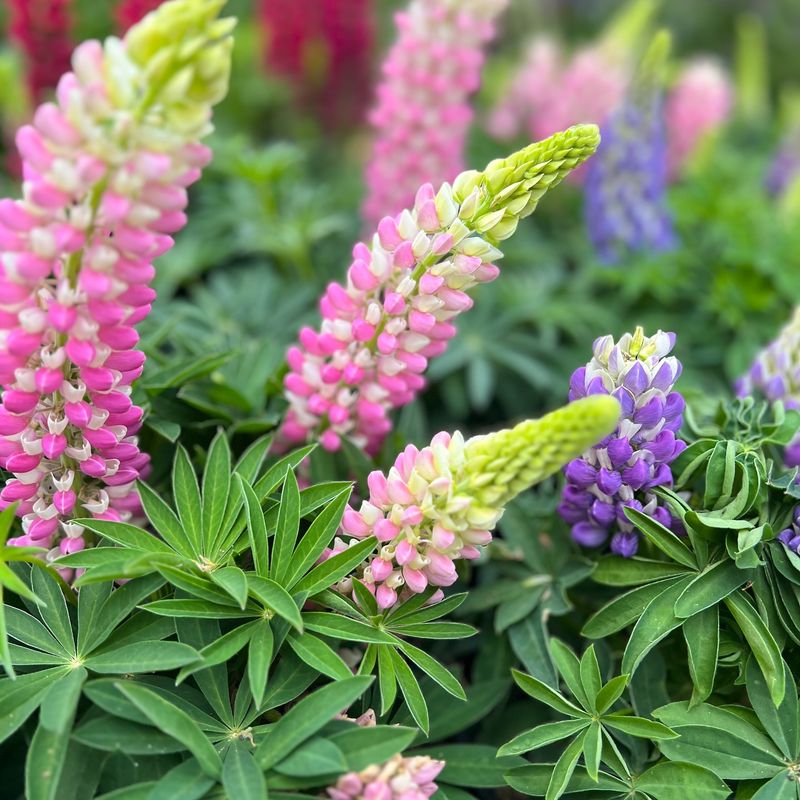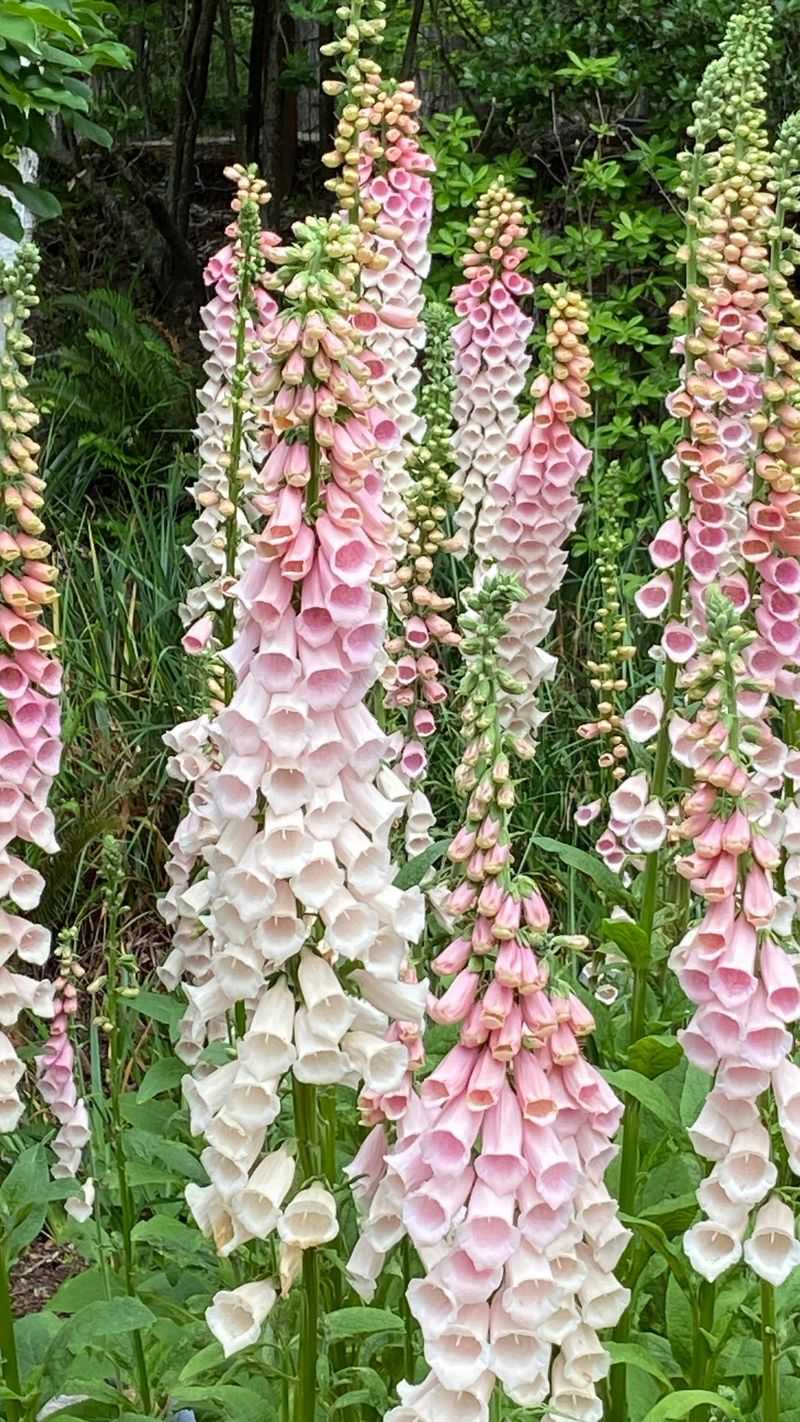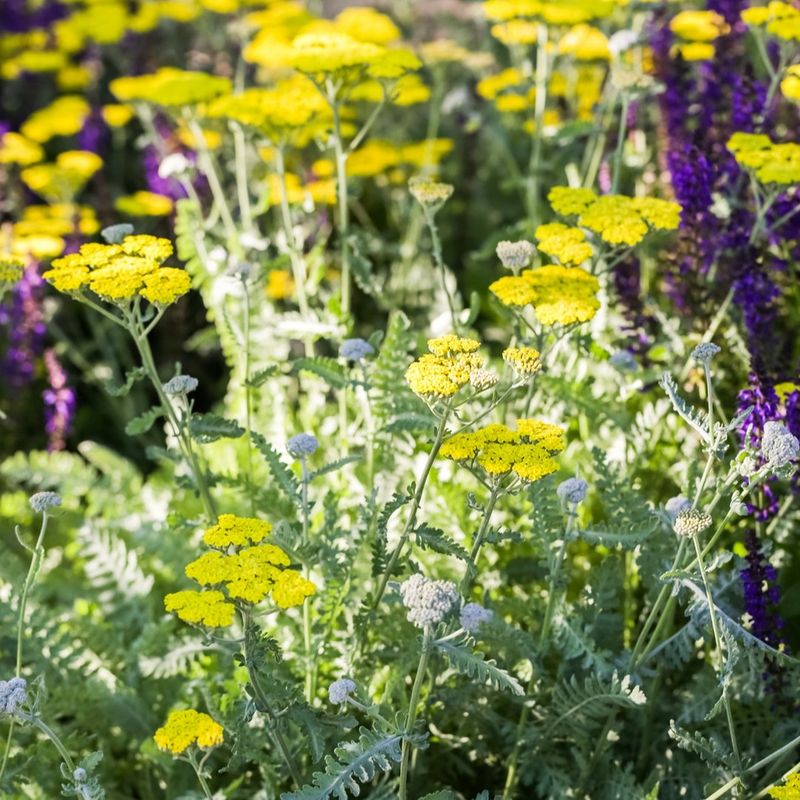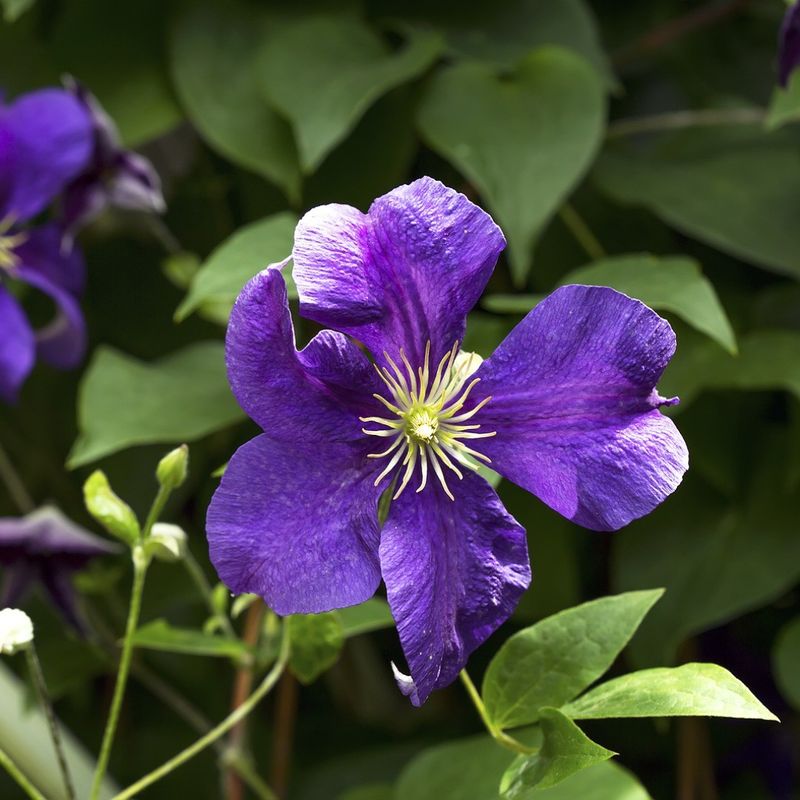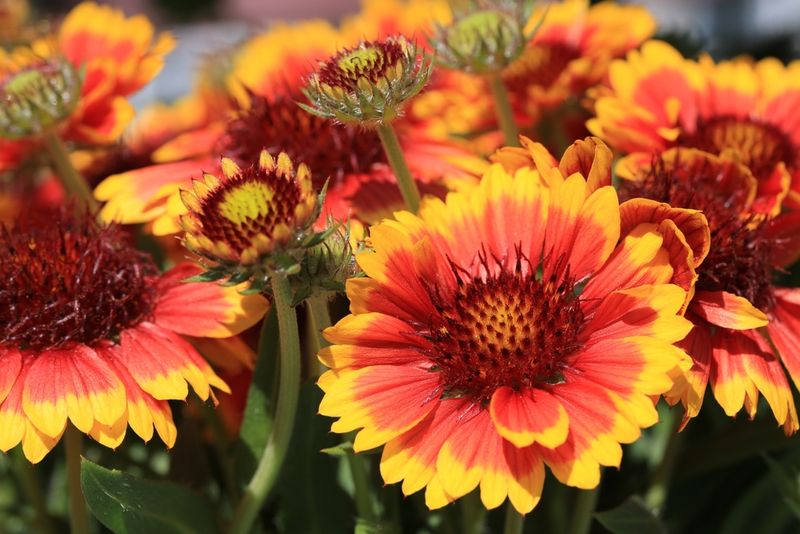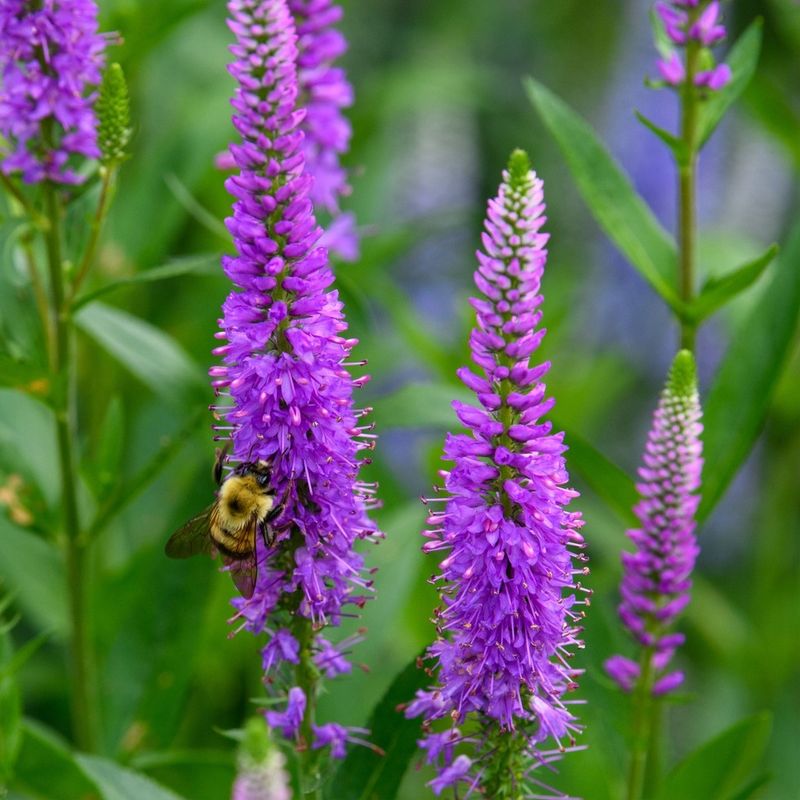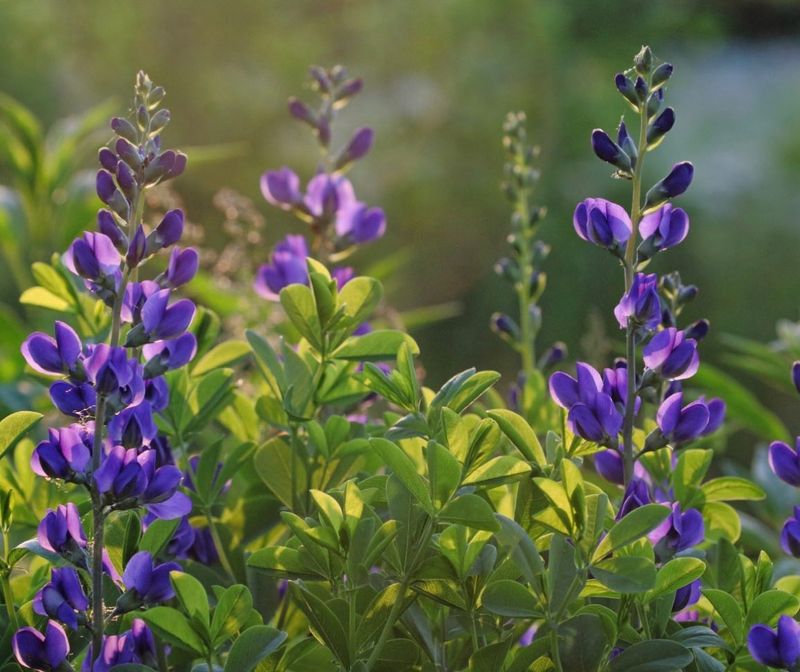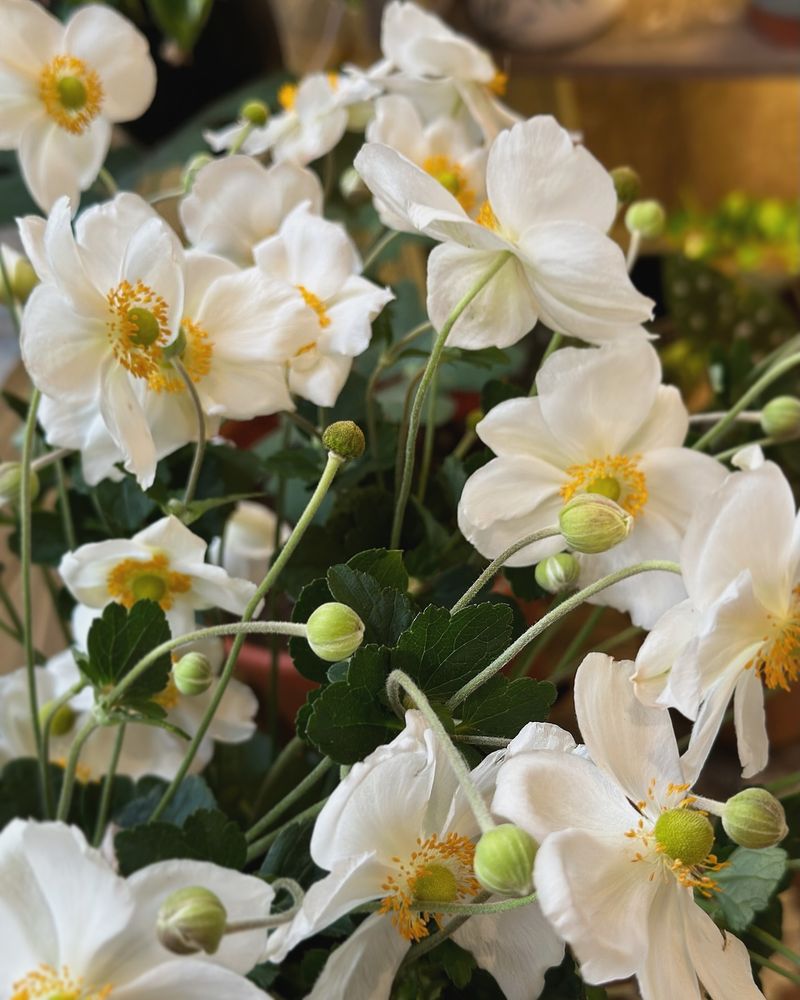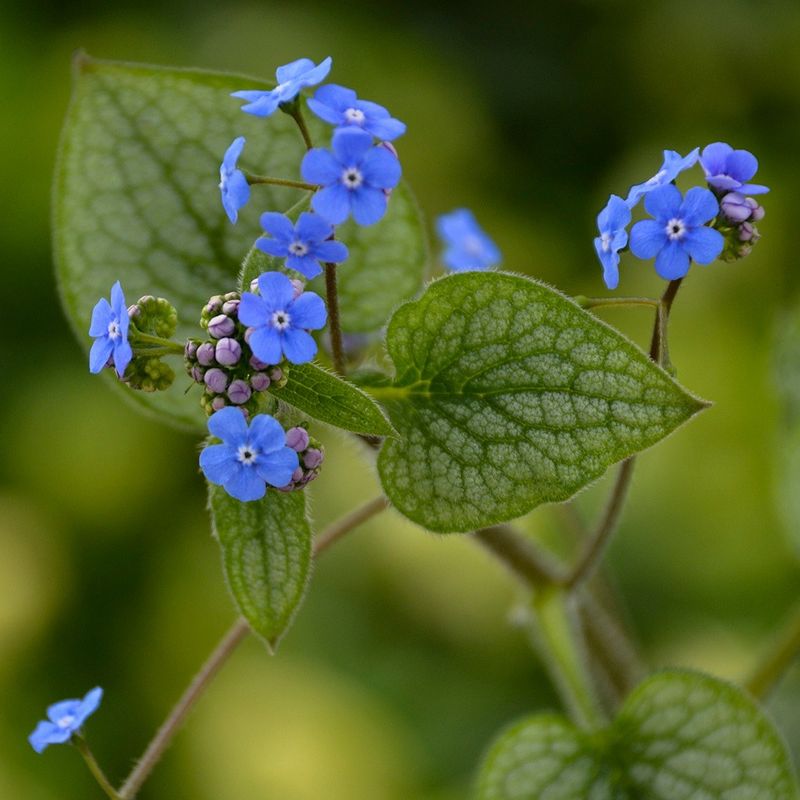Spring is a time when gardens come to life with colorful blooms and vibrant greenery. However, finding perennials that bloom late in the spring can be a delightful challenge. These plants extend the beauty of springtime, offering bursts of color and fragrance when other plants might be fading. Here are 19 perennials that will keep your garden lively and beautiful throughout the season.
1. Peony
Peonies are garden favorites with their large, fragrant blossoms. They bloom in late spring, adding a splash of color when many other flowers are fading. Their lush, dense foliage remains attractive throughout the summer.
These flowers can live for decades, making them a long-term addition to any garden. The peony’s sweet fragrance attracts bees and butterflies, adding lively activity to your garden.
Plant them in full sun to enjoy their full blooming potential. Peonies are also deer-resistant, making them an excellent choice for gardens where deer are common.
2. Coreopsis
Looking for late-spring color? Coreopsis (aka tickseed) delivers sunny blooms right when you need them. Known for its cheerful yellow flowers, coreopsis brings sunshine to any garden.
They are drought-tolerant and easy to grow, thriving in poor soil conditions. This makes them perfect for low-maintenance gardens. Coreopsis attracts butterflies and birds, adding both beauty and life to your yard.
They are excellent for cutting gardens, with long-lasting blooms that look great in a vase. Pair them with purple coneflowers for a stunning contrast.
3. Salvia
Salvia offers tall spikes of purple or blue flowers that bloom in late spring. These perennials are loved for their vibrant colors and ability to attract pollinators like bees and hummingbirds.
Salvia is drought-tolerant, making it a good choice for those who prefer low-water gardens. The aromatic leaves and long-lasting blooms make salvia a garden favorite.
These plants thrive in sunny spots and are resistant to deer and rabbits. Use salvia in borders or mixed plantings to add height and interest. Their bold colors enhance any landscape.
4. Bleeding Heart
With heart-shaped flowers that sway from graceful arches, bleeding hearts bring a touch of romance to any garden. Blooming in late spring, they add a touch of whimsy to shaded gardens.
Their soft pink or white flowers are reminiscent of a romantic garden scene from a fairy tale. These plants prefer cool, moist environments and thrive in partial shade. They are perfect for woodland gardens or shaded borders.
Bleeding hearts go dormant in the summer, so plant them with ferns or hostas to fill in gaps when the flowers have faded.
5. Columbine
Columbine plants offer an array of colors, with blossoms that look like shooting stars. Blooming in late spring, these flowers add excitement to borders and rock gardens.
Columbine’s unique shape and colors attract hummingbirds and butterflies. They thrive in full sun to partial shade and are easy to grow.
These perennials self-seed, spreading joy throughout the garden without much effort. With their delicate, nodding blooms, they create a charming, fairy-like atmosphere. Pair them with ferns for a beautiful, woodland-inspired setting.
6. Iris
With their striking flowers and dramatic, sword-shaped foliage, irises are true garden showstoppers. Blooming in late spring, they bring vibrant colors like blue, purple, and yellow to the garden. Irises are hardy and easy to grow, perfect for beginners and experienced gardeners alike.
These flowers attract butterflies, adding life and movement to your garden. Plant them in well-drained soil and full sun for the best results. Irises make excellent cut flowers, bringing their beauty indoors.
They create a stunning display when planted in groups or borders.
7. Allium
Alliums are known for their unique spherical blooms that appear in late spring. These perennials add a touch of whimsy and architectural interest to the garden. Their tall stems and vibrant purple or white flowers make a striking statement.
Alliums are easy to grow and deer-resistant, ideal for low-maintenance gardens. They prefer sunny locations and well-drained soil.
Plant them in clusters for a bold effect or scatter them throughout the garden for a subtle touch. Alliums attract pollinators like bees, adding life to your garden.
8. Poppy
Few flowers rival poppies, with their eye-popping colors and silky, papery blooms. Blooming in late spring, they offer shades of red, pink, orange, and white.
These flowers are easy to grow and thrive in full sun and well-drained soil. Poppies are perfect for a cottage-style garden or wildflower meadow. Their vibrant blooms attract bees and butterflies, enriching the garden’s ecosystem.
Once established, poppies reseed themselves, ensuring blooms year after year. They create a stunning display in mass plantings or mixed borders.
9. Daylily
Daylilies are hardy perennials that bloom in late spring, offering a variety of colors. Their trumpet-shaped flowers open for just one day, but each plant produces many buds for continuous blooms.
Daylilies are drought-tolerant and thrive in full sun. They are versatile, perfect for borders, containers, or mass plantings. These flowers attract butterflies and hummingbirds, bringing life to your garden.
Their low maintenance and ability to thrive in many conditions make them a gardener’s favorite. Pair them with ornamental grasses for a stunning effect.
10. Astilbe
With airy, feather-like plumes, astilbes add texture and charm to the late-spring garden. These perennials add texture and color to shaded areas of the garden. Their flowers come in shades of pink, red, and white, creating a soft, romantic atmosphere.
Astilbes thrive in moist, well-drained soil and prefer partial shade. They attract pollinators like bees, adding movement and life to shaded gardens. Use them in borders, woodland gardens, or as ground cover.
Their lush foliage remains attractive throughout the growing season, enhancing garden beauty.
11. Lupine
Lupines are distinctive for their tall, spiky blooms that appear in late spring. These flowers come in a range of colors, including blue, purple, pink, and white. Lupines thrive in full sun and well-drained soil, making them ideal for cottage gardens or wildflower meadows.
They attract bees and butterflies, adding lively action to your garden. Lupines are nitrogen-fixing plants, improving soil quality for neighboring plants.
Their bold, vertical presence creates a striking contrast with lower-growing perennials. Plant them in groups for the best effect.
12. Foxglove
Reaching skyward, foxgloves dazzle with rows of delicate, bell-shaped flowers. Blooming in late spring, they bring drama and height to garden borders.
These flowers attract hummingbirds and bees, adding lively interest to your garden. Foxgloves prefer well-drained soil and can thrive in full sun to partial shade. Be cautious, as all parts of the plant are toxic if ingested.
Despite this, their beauty and ability to grow in challenging conditions make them a popular choice. Foxgloves self-seed, providing new plants each year.
13. Yarrow
Yarrow is a hardy perennial known for its flat-topped clusters of flowers. Blooming in late spring, it brings colors like yellow, white, and pink to the garden. Yarrow thrives in full sun and is drought-tolerant, perfect for low-maintenance landscapes.
These flowers attract butterflies and beneficial insects, supporting garden health. Yarrow’s fern-like foliage adds texture and interest even when not in bloom.
It’s an excellent choice for borders, meadows, or naturalized areas. Once established, yarrow is easy to care for and drought-resistant.
14. Clematis
Late spring belongs to clematis vines, flaunting large, vibrant flowers along their winding stems. They add vertical interest to gardens, climbing trellises, fences, and arbors. Clematis come in various colors, including purple, pink, and white.
These vines thrive in well-drained soil and prefer sunny locations. Regular pruning encourages more blooms and keeps the plant healthy. Clematis attract butterflies and bees, adding dynamic life to your garden.
They pair beautifully with climbing roses for a stunning display. Provide support to help them reach their full potential.
15. Gaillardia
Gaillardia, or blanket flower, is known for its vibrant, daisy-like blooms that appear in late spring. These flowers come in bold shades of red, orange, and yellow, adding warmth to any garden.
Gaillardia is drought-tolerant and thrives in full sun, perfect for sunny borders or rock gardens. Their long-lasting blooms attract butterflies and bees, enhancing garden activity.
Gaillardia’s low-maintenance nature makes it suitable for gardeners of all levels. Pair them with blue or purple flowers for an eye-catching contrast.
16. Veronica
Slender spikes of tiny blue flowers make veronica (speedwell) a late-spring garden favorite. These perennials add vertical interest to borders and mixed plantings. Veronica is easy to grow, thriving in full sun and well-drained soil.
Their vibrant blooms attract butterflies and bees, bringing life to your garden. Veronica’s neat, compact form makes it perfect for edging or small spaces.
They also work well in rock gardens or containers. Plant them in groups for the most impact, and enjoy their long-lasting blooms throughout the season.
17. Baptisia
In late spring, baptisia (false indigo) bursts forth with spiky clusters of charming pea-like blossoms. These perennials produce tall spikes of blue, purple, or white flowers, adding elegance to any garden.
Baptisia is drought-tolerant and thrives in sunny locations, making it ideal for low-maintenance landscapes. Their deep roots improve soil quality and prevent erosion.
Baptisia’s attractive foliage remains appealing even after blooming. Use these plants in borders or wildflower meadows for a natural look. They pair well with ornamental grasses and other perennials.
18. Anemone
Anemones are known for their delicate, poppy-like flowers that bloom in late spring. These perennials bring a touch of elegance to shaded gardens or woodland settings. Anemones come in shades of white, pink, and purple, offering subtle beauty.
They thrive in well-drained soil and prefer partial shade. Anemones attract pollinators like bees, adding life to your garden.
Their foliage remains attractive throughout the season, providing interest even when not in bloom. Plant them in groups for a stunning effect, or mix with ferns for a natural look.
19. Brunnera
Brunnera is loved for its heart-shaped leaves and delicate blue flowers that bloom in late spring. These perennials are perfect for shaded gardens, adding a touch of color and texture.
Brunnera prefers moist, well-drained soil and can brighten up dark corners of the garden. Their flowers resemble forget-me-nots, creating a charming, nostalgic feel.
The foliage remains attractive, providing interest throughout the season. Use brunnera as ground cover or in shaded borders. Pair them with hostas or ferns for a lush, woodland look.

